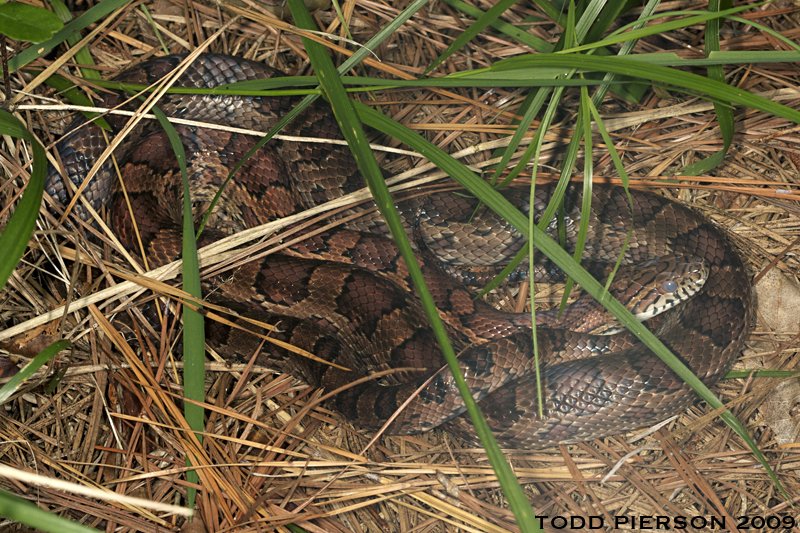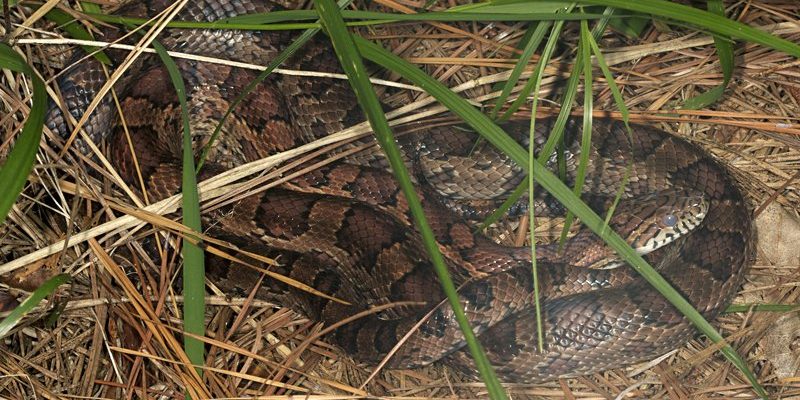
So, what exactly sets corn snakes apart from other snakes you might stumble upon in the wild? These beauties are known for their vivid patterns and unique features. Grab your hiking boots and let’s dive into the world of corn snakes, so you can learn to spot one and appreciate their beauty wherever you explore.
What Do Corn Snakes Look Like?
Corn snakes are non-venomous snakes that can be identified by their vibrant coloration and distinct patterns. Typically, they display a mix of orange and red hues with dark, outlined splotches along their backs. But it’s not just about color; their size also matters. Adult corn snakes usually measure between 2 to 6 feet long, with the average being about 4 to 5 feet.
The scale texture gives them a shiny appearance, which can be mesmerizing in the sunlight. Their belly is usually a light yellow or white, often dotted with black or gray markings. If you see a snake with these characteristics, chances are, you might be looking at a corn snake. However, remember that colors can vary widely, so don’t fret if it doesn’t match the textbook description exactly.
Shape and Size
Apart from color, corn snakes have a slender body shape and a relatively long tail. This tail is useful for climbing and balancing, which makes it easier for them to navigate their natural habitat. If you see a snake that seems a bit more sinuous compared to others, it could be a corn snake.
An important identifying feature is their head, which is slightly wider than their neck. This shape helps them blend in with their surroundings, making them less noticeable to predators and prey alike. So, if you’re trying to identify a corn snake, look not just at the color but also at the shape and proportionality of the body compared to the head.
Where Do Corn Snakes Live?
Corn snakes are native to the southeastern United States and are often found in a range of habitats. They prefer areas that offer both open spaces and cover, like woodlands, fields, and even around agricultural areas. You might find them in abandoned buildings or under debris where they can stay hidden from both predators and humans.
While these snakes are skilled climbers, you’ll often see them on the ground basking in the sun or hunting for prey. Corn snakes are also known to thrive in areas where there are plenty of rodents, as they primarily feed on mice and rats. If you’re exploring areas where these types of habitats intersect, keep your eyes peeled for movement in the underbrush.
Behavior and Temperament
Another characteristic that helps in identifying corn snakes is their behavior. These snakes tend to be quite docile and are generally not aggressive unless provoked. If you come across one, it’s more likely to slither away than to stand its ground. This non-aggressive nature also makes them a popular choice for pet owners, so be aware that if you spot one, it might not be as threatening as you think!
You might be wondering how to tell if a snake is a corn snake based on its behavior. If it’s moving gracefully, rather than erratically, that’s a good sign. Corn snakes often exhibit a smooth and fluid motion as they navigate their environment, which can be quite captivating to watch.
How To Spot a Corn Snake
When you’re on a hunt to identify a corn snake, pay attention to its surroundings and how it interacts with its environment. Here are some tips to help you spot one more easily:
- Look for colors: Keep an eye out for that vibrant orange and red coloring against the background of grass or soil.
- Seek hiding spots: Check under logs, rocks, or debris. Corn snakes like to stay concealed to avoid detection.
- Listen for movement: If you hear a rustling sound, it could indicate a snake nearby. Approach slowly to avoid scaring it off.
- Watch for basking: On sunny days, corn snakes may lay in open areas to soak up heat. This is a prime opportunity for you to see one in the wild!
Patience is key. You might need to wait quietly for a while before spotting one. Being observant and taking your time in the right locations will greatly increase your chances.
Distinguishing Corn Snakes from Other Species
When out in the wild, it’s essential to know how to differentiate a corn snake from other similar-looking snakes. For instance, the Eastern Rat Snake can sometimes be confused with a corn snake due to its similar colors. However, rat snakes typically have a more solid coloration without the distinct blotches that corn snakes display.
Another snake to be cautious of is the Copperhead, which is a venomous snake. Copperheads have a more triangular head and tend to have hourglass markings on their bodies, contrasting significantly from the corn snake’s more rounded head and patterned back. If you’re ever in doubt, it’s best to keep your distance and observe from afar.
Keep in mind that the natural variations in color and pattern can make identification tricky, especially if you’re new to spotting snakes. Always trust your instincts and err on the side of caution.
Why Identifying Corn Snakes Matters
Whether you’re an avid nature lover or just curious, knowing how to identify corn snakes can enhance your outdoor experiences. These snakes play a crucial role in controlling the population of rodents, which helps maintain the balance within their ecosystems. By recognizing and respecting their presence, you contribute to the preservation of local wildlife.
Moreover, understanding these creatures can foster appreciation for their beauty and importance in nature. When people take the time to learn about corn snakes, it can lead to greater conservation efforts and a deeper connection with the environment.
So, next time you’re out exploring, remember that identifying a corn snake isn’t just about spotting a cool animal; it’s about engaging with the wild and appreciating the small wonders in life.
Final Thoughts
Identifying a corn snake in the wild can be an exciting and rewarding experience. By remembering their key features—like color, size, and behavior—you’ll be better prepared for your next outdoor adventure. Keep your eyes open, be patient, and approach with respect for all creatures. Who knows? You might just encounter a stunning corn snake slithering gracefully through its habitat, adding a little magic to your day in nature. So happy snake spotting!

